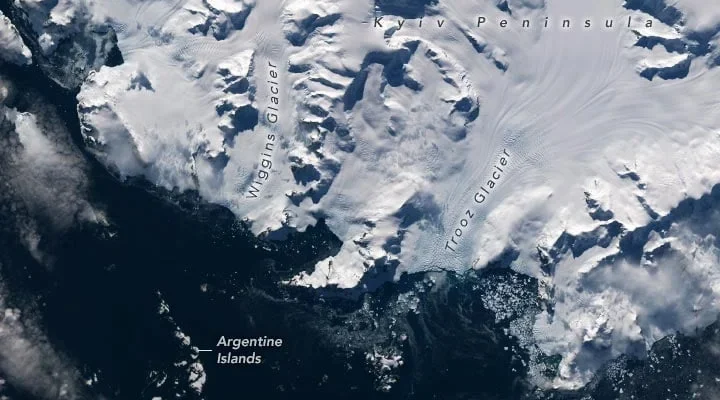
The Antarctic island served as a winter base for polar explorers in the early 20th century. The Argentine islands of Antarctica, covered with a layer of ice all year round, look like winter even in summer. In summer, the ice caps are visible on half of the total land area, although this figure is slightly higher on Winter Island, where the ice cap covers approximately 70 percent of the land.
Landsat 9 OLI-2 (Operational Land Imager-2) acquired these images on February 16, 2023, during the summer in the southern hemisphere. A wide view (top) shows the location of the group of islands relative to the Kyiv Peninsula, which protrudes from the western side of the Antarctic Peninsula.

The summer season provides enough daylight for the satellites to capture natural color images in this region. It is also the time of year when the sea ice around Antarctica melts, making it easier to distinguish the ice-covered islands from the deep blue Bellingshausen Sea. A few days after these images were acquired, the sea ice around Antarctica reached the lowest level ever observed since satellite record-keeping began in 1979. The trend of low ice levels continued throughout the winter, a time when ice cover should have been growing much faster during the darkest and coldest months.
Before the advent of satellites, information about the region was obtained by polar explorers and surveyors who visited it in person. Winter Island got its name from the British Graham Land Expedition (1934-1937), which used the island as a winter base in 1935. Members of the expedition explored the region from the air using airplanes and from the ground using dog sleds, taking advantage of the sea ice. traveling along the coast. The expedition successfully mapped most of the coastline of Graham Land, the northern part of the Antarctic Peninsula.
Since then, research work has been moved to the neighboring island of Galindez, where the Ukrainian Vernadsky Research Base is now located. But visitors with permission can still access Wordie House, a historic base on Winter Island. Visitors can also meet some of the region’s local inhabitants, including Adélie and Gentoo penguins.

